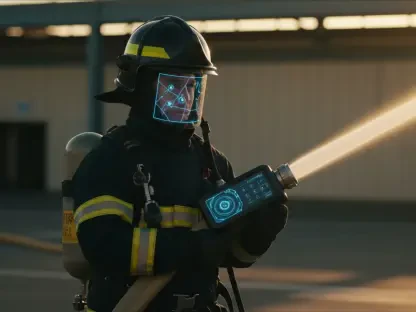The growing intersection of technology and disaster management has given rise to a transformative trend: robotic rescue technology. In an era marked by frequent natural disasters and complex emergency situations, this emerging technology is proving to be a critical asset. Its ability to venture into hazardous areas, combined with powerful sensing and communication capabilities, positions it as a game-changer in emergency response scenarios. Understanding this trend is vital for the evolution of future search and rescue operations, as it offers unprecedented options for enhancing efficiency and safety for first responders.
Current Landscape and Trends
The deployment of robots in disaster zones has experienced significant growth in recent years, driven by advancements in technology and a recognized need for innovative solutions. Reports indicate a steady rise in adoption rates, with more nations incorporating robotic rescue technology into their emergency response strategies. According to industry analyses, this growth reflects the increasing confidence in robots’ capabilities to perform complex tasks under challenging conditions, from navigating through debris to locating survivors. As governments and organizations invest more in research and development, this trend is expected to continue, with robotic solutions gaining momentum worldwide.
There are numerous instances where robotic rescue technology has been applied successfully, offering a glimpse into its potential. The Soft Miniaturized Underground Robotic Finders (SMURFs), developed through a collaborative effort of European and Japanese researchers, are among those pioneering innovations. These small-scale robots feature high-tech sensors and are designed to assist in finding survivors after disasters such as earthquakes. With the ability to navigate through tight spaces and detect organic compounds, SMURFs highlight the practicality and impact this technology can have in real-world scenarios.
Expert Insights and Industry Perspectives
Leading experts in the field of emergency response and robotics highlight the significance of robotic rescue technology. Their insights stress that these advancements offer both challenges and opportunities. One key challenge lies in ensuring the reliability and autonomy of robotic systems in unpredictable environments. Despite these hurdles, the potential benefits, such as reducing human risk and enhancing rescue efficiency, are undeniable. Thought leaders in the sector contend that, with continued investment and development, robots could transform disaster response efforts.
Companies and organizations are actively pursuing solutions to integrate robotics into their emergency protocols. Industry leaders emphasize the importance of interoperable systems and technologies that can communicate seamlessly across platforms. As robotic technologies evolve, these professionals foresee a future where robots serve as indispensable partners in disaster management, providing critical support to human teams and reshaping how emergencies are handled.
The Future of Robotic Rescue Technology
Future developments in robotic rescue technology hold promising potential to transform disaster response strategies. Enhancements in artificial intelligence and machine learning algorithms will significantly improve robotic autonomy and decision-making capabilities. This progression may lead to more versatile and adaptive robots capable of responding to a variety of disaster scenarios. Despite these encouraging prospects, challenges remain. The complexity of coordinating robotic operations in unpredictable environments necessitates ongoing advancement in sensor technology and communication systems.
The implications of robotic rescue technology extend across multiple industries, from search and rescue to infrastructure assessment. Beyond the immediate benefits, such as improved safety for first responders, this technology poses broader societal questions about the role of robots in traditionally human-centric tasks. While the potential for positive outcomes dominates current discussions, careful consideration of ethical and practical aspects is necessary as robots become more intertwined with emergency planning and response frameworks.
Conclusion
The exploration of robotic rescue technology reveals a promising trend poised to redefine emergency response. By leveraging cutting-edge robotics, first responders have already begun enhancing their capabilities to effectively manage disaster scenarios. As the development of these systems progresses, it is crucial to address operational and ethical challenges to maximize their potential. With thoughtful integration and cooperation between various stakeholders, robotic technology will become an essential component in safeguarding communities against future emergencies.









